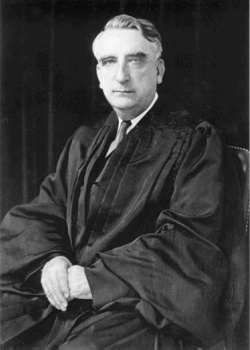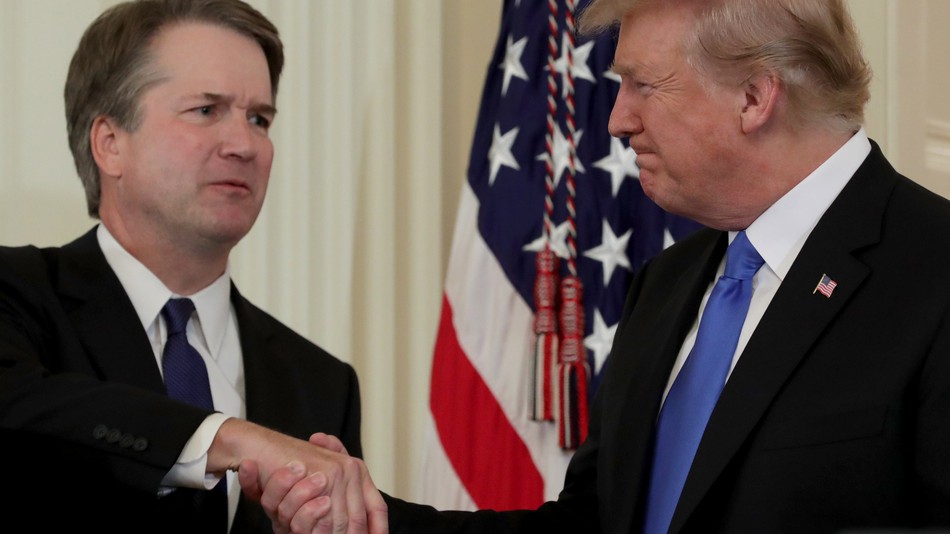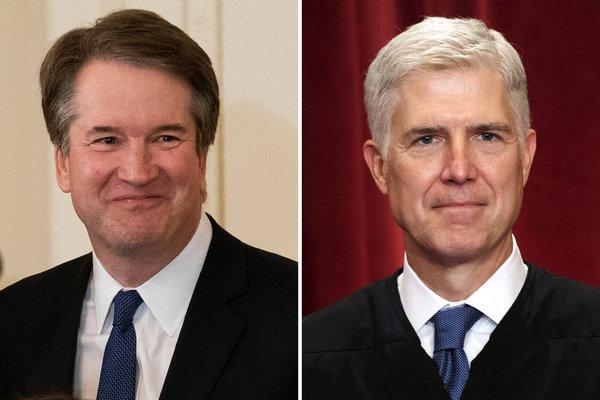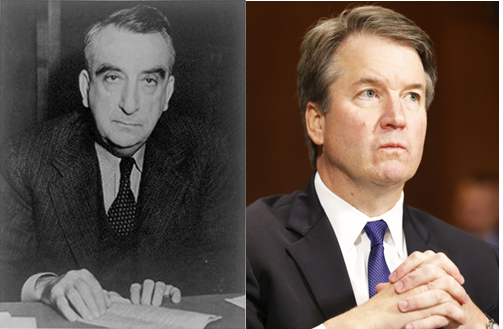by Mark Shanahan, Political Historian, University of Reading
Fred Vinson died on September 8th 1953 of a heart attack. In the days when people drank hard and smoked harder, his cause of death was no surprise and nor was the fact he was dead at the age of 63. Young to die by today’s standards but bang on average for American men in the early 1950s. Why would that matter today – and why, might you ask, talk about Vinson at all?

Vinson, a loyal Democrat, a former Congressman and Secretary of the Treasury under Harry Truman, was parachuted into the Supreme Court by Truman in 1945 on the death of Harlan Fiske Stone as the 13th Chief Justice. Despite his experience in all branches of the US government, his time on SCOTUS was not distinguished and Republicans viewed his death as an opportunity to shift the Court to the right, redressing the activist imbalance they considered to have emerged through Roosevelt and Truman’s appointments – eight Justices in the case of FDR and a further four under Harry Truman.
We have certainly seen an echo of 1953 over the past weeks with the Confirmation Hearings of new Associate Justice Brett Kavanaugh. Rarely has any judicial appointment caused such an outcry as Kavanaugh’s. SCOTUS’s newest member has been subjected to wholly partisan attacks from Democrats in the Senate and from liberals across the country, balanced by a wave of uncritical pandering from Congressional Republicans and the Trump base, and fanned as ever by the President – not least through his mocking of Dr Christine Blasey Ford who had accused Justice Kavanaugh of sexually attacking her while they were both in High School.

While the veracity of Dr Ford’s claim will likely never now be tested, the sour taste in the mouth of many Americans may linger long into Kavanaugh’s term on the Court – and that could be a very long term indeed. Here, then, is the first point where Fred Vinson comes in. With an average life expectancy of 63 in 1950s Washington DC, the chances of the Court being locked into either an activist or restraining cycle for any length of time were relatively small. That has changed. First with the appointment of 51 year old Neil Gorsuch, and now with 53 year old Brett Kavanaugh adding his originalist Constitutional reading to the bench, the Court looks likely to shift firmly into conservative thinking for a generation. That’s a win for the Trump base – especially white socially conservative men.
Such overtly political appointments are not new. Three out of four of Truman’s appointments reeked of cronyism (including our friend Fred), and the current changes to SCOTUS play squarely into what is emerging as a very ordinary presidency under Trump, though one played out to the venal snarling of a President who bases every decision he makes on the personal impact it will make on him. Gorsuch was good for Trump. Kavanaugh, up until the allegations of sexual impropriety, seemed cut from the same stone. Even when his weedy, reedy, poor-me defence caused many in the US to doubt the good character of the learned Judge, Trump was able to win the day by attacking Kavanaugh’s accuser. Politics was played out across the media, driving the divides in the country even deeper. Trump fulfilled one campaign promise, while deviating even further from his promise to the nation on the night he won the election: “Now it’s time for America to bind the wounds of division…To all Republicans and Democrats and Independents across the nation, I say it is time for us to come together as one united people,” he said. “I pledge to every citizen of our land that I will be president for all Americans, and this is so important to me.” After this week, that has never seemed so far from the truth.

In my chapter for The Trump Presidency: From Campaign Trail to World Stage, I compare the outsider presidencies of Trump and Eisenhower. Ike, of course, was president when Fred Vinson died. Using a Recess Appointment, Eisenhower appointed the Californian Earl Warren to the Court as Chief Justice. Seemingly conservative in his views, he was acceptable both to the GOP and to the Southern Democrats. Yet starting with Brown v The Board of Education, Warren showed a liberal activist streak in his management of SCOTUS cases. This gathered speed when he was joined on the Court by Associate Justice Brennan, another supposed conservative who eschewed his partisanship once he put on the SCOTUS robe. When Kennedy succeeded Eisenhower, the Court swung further towards a liberal-leaning with Arthur Goldberg replacing Felix Frankfurter. And there is no doubt that the mood of the court was an enabling factor in the liberal legislation of the 1960s under Kennedy and Johnson. Eisenhower’s appointment had an effect that long-outlived POTUS 34 – the likelihood is that POTUS 45’s appointments will have a similar, if opposite, long term effect.
The appointment of SCOTUS Justices has always been overtly political. But once they take on the Court’s black robes, the nine wise heads are supposed to leave their partisanship at the door and deliver decisions that are driven by upholding the Constitution. So we have to wait and see what impact Gorsuch and Kavanaugh will have. But their impact on US politics could be seen much sooner.
On November 6, Americans vote in the Midterm General Election. All 435 House seats are in play with a third of Senate seats up for grabs. Up to last week the assumption was that this would be a vote on Trump’s presidency and that a blue wave might wash over the country. That may still happen – there’s almost a month until the election. But Trump has a gut instinct on how to galvanise support. He will never unite the country behind him and almost certainly has already written off the female vote in all but the most socially conservative states. But the fight over Kavanaugh has given conservatives a reason to believe and a reason to vote again. No doubt the White House and GOP will spin the next month on economic success and conservative values. While Kavanaugh raises the suspicion of a poor SCOTUS choice, he also represents another Trump delivery of a campaign pledge. The tribes of America are divided along conservative and progressive lines. Bolstered by Kavanaugh, Trump might just make the red GOP line a much harder one for the Democrats to breach.

